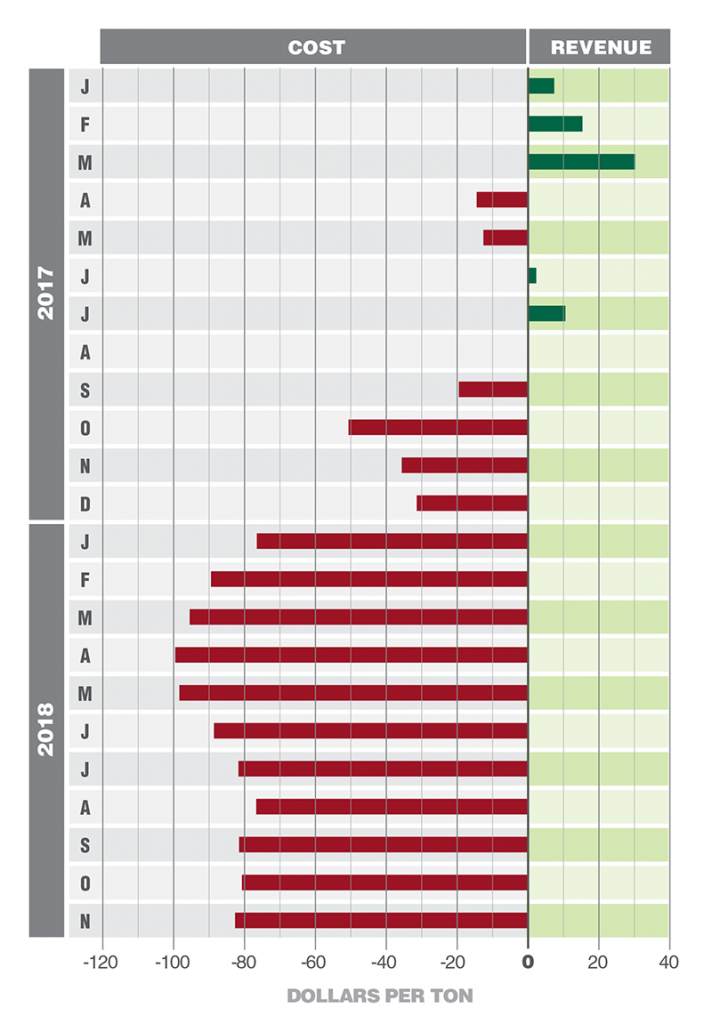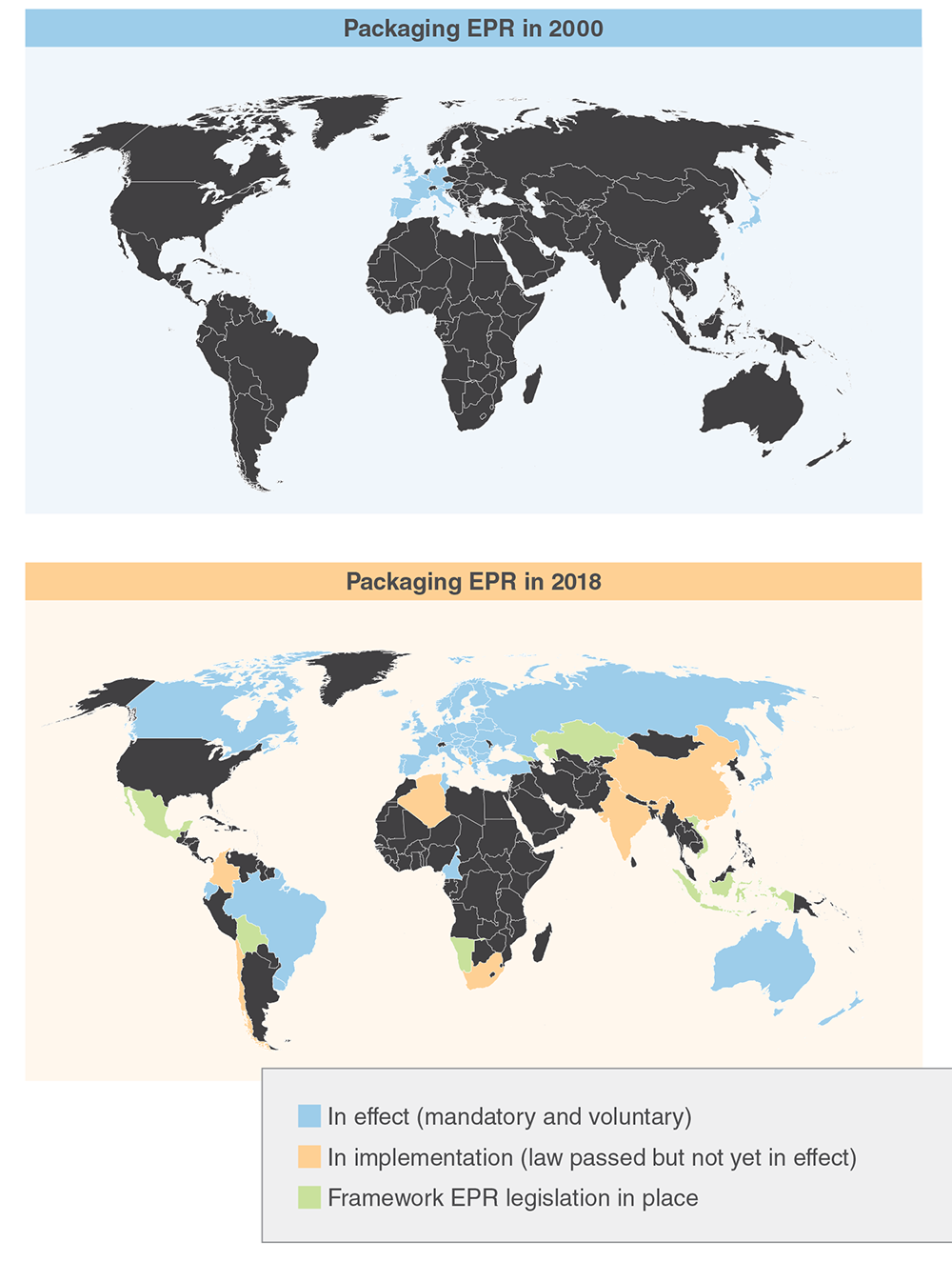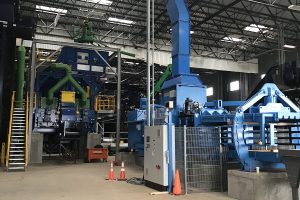 This story has been corrected.
This story has been corrected.
Some recycling stakeholders have argued for more source separation to bolster material quality. Now, a lawmaker in the country’s largest state is joining the call.
 This story has been corrected.
This story has been corrected.
Some recycling stakeholders have argued for more source separation to bolster material quality. Now, a lawmaker in the country’s largest state is joining the call.
In late 2018, officials in the city of Walla Walla, Wash. (population 32,000) issued a report that showed the economics of the city’s single-stream curbside recycling program turned upside down over the course of 18 months.
As the graph below indicates, the city went from earning up to $30 per ton for recyclables in early 2017 to paying as much as $100 per ton a year later. Over the course of 2018, the city’s program lost a total of $130,000.
Walla Walla, which attributed the financial flip primarily to China’s National Sword import policy, has instituted a monthly recycling surcharge on resident bills to help get the program back on solid financial footing. The city’s program collects standard fiber items and plastics Nos. 1 and 2. It does not accept glass.

Data source: City of Walla Walla, Wash.
This article originally appeared in the February 2019 issue of Resource Recycling. Subscribe today for access to all print content.
 Merlin Plastics and Peninsula Plastics Recycling are making substantial investments in mixed-plastics processing capacity, bringing positive news for a region hard hit by China’s ban.
Merlin Plastics and Peninsula Plastics Recycling are making substantial investments in mixed-plastics processing capacity, bringing positive news for a region hard hit by China’s ban.
 Two government initiatives looking to energize the lithium-ion battery recycling sector have officially launched, offering prize money to recycling entrepreneurs and a dedicated laboratory to house research projects.
Two government initiatives looking to energize the lithium-ion battery recycling sector have officially launched, offering prize money to recycling entrepreneurs and a dedicated laboratory to house research projects.
 Casella Waste Systems and Advanced Disposal Services, two of the larger garbage and recycling companies in North America, experienced tumbling recycling revenues last year.
Casella Waste Systems and Advanced Disposal Services, two of the larger garbage and recycling companies in North America, experienced tumbling recycling revenues last year.

China’s scrap import restrictions and their rippling market effects pared recycling revenues for Waste Management and Waste Connections last year.
The maps below demonstrate how extended producer responsibility (EPR) programs for packaging have spread around the globe over the last decade, with programs requiring packaging makers to fund recovery systems taking root in a variety of countries.
The maps were provided by Environmental Packaging International (EPI), a consultancy specializing in environmental compliance, product stewardship and sustainability related to packaging and products. EPI, More Recycling and IHS Markit are collaborating to produce a special report exploring the impact of regulations on plastics and analyzing how well the supply of recycled resin is positioned to satisfy demand. To learn more about the project and special report, visit ihsmarkit.com/products/sea-plastics-pathway.html.

This month’s Data Corner is produced by More Recycling. For additional info, go to morerecycling.com.
This article originally appeared in the January 2019 issue of Resource Recycling. Subscribe today for access to all print content.

After investing $12 million in additional equipment and modifications, RePower South has restarted a long-shuttered mixed-waste processing facility in Alabama.
Continue Reading

